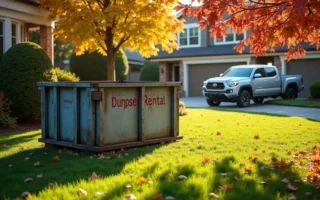As winter sets in, homeowners across the country prepare for the challenges that colder weather brings. While we often focus on winterizing our homes, vehicles, and outdoor spaces, one area that can be easily overlooked is the garage door.
Your garage door is not only a critical entry point to your home but also a barrier against the harsh elements of winter. Unfortunately, the frigid temperatures, ice, and snow can take a toll on your garage door, leading to a variety of common problems.
So, let’s take a look in further detail.
1. Frozen Garage Door
One of the most frequent problems homeowners face during winter is a frozen garage door. When moisture accumulates on the door’s rubber seals, tracks, or moving parts and then freezes, it can prevent the door from opening or closing properly. Here’s what you can do to tackle this issue:
- De-Icing Products: Apply a commercial de-icing product to melt ice and snow buildup.
- Gentle Force: Avoid using excessive force to open the door, as this can damage the components.
- Warm Water: Pour warm (not hot) water on the seals and tracks to melt the ice.
2. Contraction of Metal Parts
Cold temperatures cause metal components, such as springs, tracks, and rollers, to contract. This can lead to issues like misalignment, reduced tension in springs, and noisy operation. To address these problems:
- Lubrication: As per ADP Garage Doors’ suggestion, apply a garage door lubricant specifically designed for cold weather to minimize friction and noise.
- Regular Maintenance: Schedule regular maintenance checks with a professional to ensure proper alignment and tension.
3. Reduced Battery Life in Remote Controls
Extreme cold can significantly reduce the battery life of your garage door remote control. If you find that your remote is no longer responsive during the winter months:
- Keep Spare Batteries: Keep spare batteries for your remote control and replace them as needed.
- Use a Keypad: Consider installing a wireless keypad outside your garage as a backup method for opening and closing the door.
4. Cracked or Brittle Weatherstripping
The rubber weatherstripping that seals the gaps around your garage door can become brittle and crack in cold weather. This can allow cold air, moisture, and even pests to enter your garage. To prevent this issue:
- Replace Weatherstripping: Inspect the weatherstripping regularly and replace it if you notice any damage.
- Install a Bottom Seal: Consider adding a bottom seal to prevent drafts and moisture from seeping in.
5. Strain on the Garage Door Opener
During winter, your garage door opener may have to work harder to lift the heavier door due to the contracting metal parts and added weight from ice and snow. To avoid overstraining the opener:
- Adjust Sensitivity Settings: Ensure that the opener’s sensitivity settings are properly adjusted to accommodate the winter conditions.
- Regular Maintenance: Schedule maintenance for the opener to keep it in optimal working condition.
6. Icing on the Tracks
Icing on the tracks can prevent your garage door from moving smoothly. To address this issue:
- Remove Ice: Clear the tracks of any ice or snow buildup to allow the door to move freely.
- Apply Lubricant: Apply a silicone-based lubricant to the tracks to prevent future ice buildup.
7. Shifting of the Door’s Balance
Cold weather can affect the balance of your garage door, causing it to shift from its optimal position. This can lead to issues with opening and closing. To address this problem:
- Seek Professional Help: If you suspect your garage door’s balance is off, it’s best to consult a professional technician to adjust the counterbalance system. If you’re noticing persistent issues, you may want to explore the affordable garage door services Darien (or elsewhere) professionals provide, as they can accurately assess and correct the imbalance for long-term reliability.
8. Insulation Problems
Inadequate insulation can result in a colder garage and higher heating bills. To improve insulation during the winter:
- Insulate the Garage: Consider adding insulation to the walls and ceiling of your garage to maintain a more comfortable temperature.
9. Regular Maintenance and Winterization
The best way to prevent these common winter garage door problems is through regular maintenance and winterization efforts:
- Schedule Professional Maintenance: Hire a professional technician to inspect and maintain your garage door before winter arrives.
- Apply Lubricant: Lubricate moving parts and hinges with a high-quality, low-temperature lubricant.
- Replace Damaged Parts: Address any damaged or worn components promptly to prevent further issues.
- Clean and Seal: Clean the tracks and seal any gaps or cracks in the garage walls to keep out drafts and moisture.
- Upgrade Insulation: Consider upgrading your garage door insulation for improved energy efficiency.
In Conclusion
Don’t let the cold weather catch you off guard—take the necessary steps to protect and maintain your garage door this winter season.




